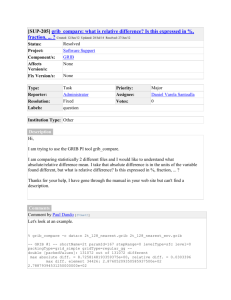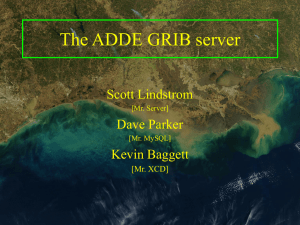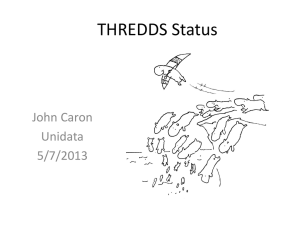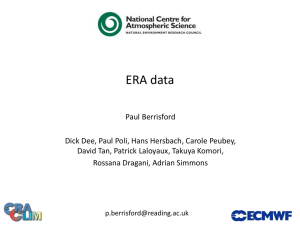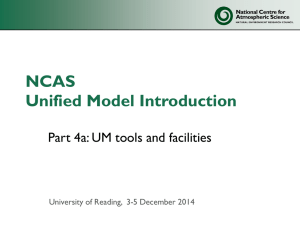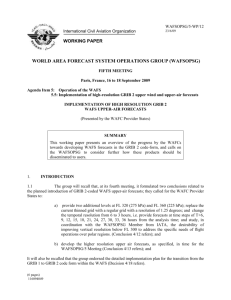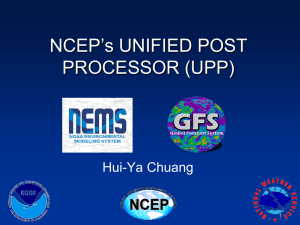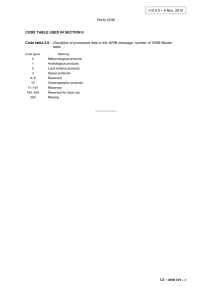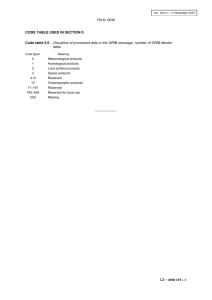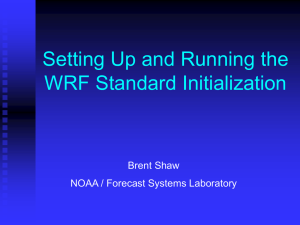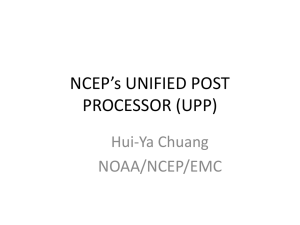GribNaming
advertisement
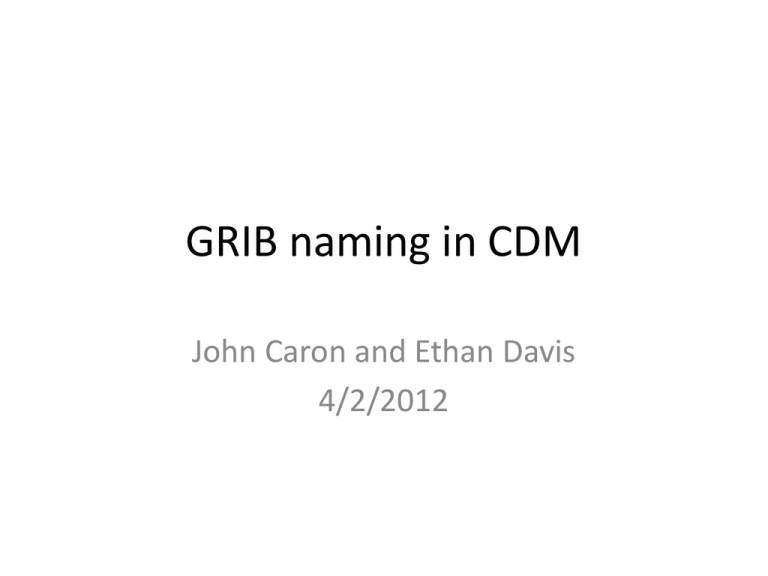
GRIB naming in CDM John Caron and Ethan Davis 4/2/2012 Outline GRIB background and issues Questions – What is best naming scheme for GRIB / netCDF library ? – What is best way for applications to present variable selections to users ? – What to do about backwards compatibility? Options GRIB Background • WMO standard for gridded meteorological data • NCEP uses exclusively for transmitting model output • All IDD model data is in GRIB • GEMPAK converts to GEMPAK format with handmaintained table (NCEP only?) • CDM aspires to be general purpose GRIB reader • IDV reads GRIB through the CDM library GRIB in CDM Problems in GRIB discovered 2010 (CDM 4.2.4) – – – – – – Time interval coordinates – affected 25% NCEP NCEP local tables were always used (GRIB2) Many errors in local tables use (esp GRIB1) Mistakes in standard WMO tables Variable naming algorithm was flawed Etc. NCDC $$ for serving large collection of GRIB – – eg Climate Forcast System Reanalysis (CFSR) eg hpr-ts45 contains 1.2M files, 250M records Complete rewrite of GRIB for TDS 4.3 – Complete review of all things GRIB GRIB Issues Summary 1. GRIB does not encode the “dataset schema” – No unique identifier for variables 2. GRIB tables are serious problem – No canonical GRIB tables – Inconsistent use of local tables – No foolproof way of knowing which tables were used when writing the GRIB file – GRIB parameter names are not required to be unique, short or stable. No “dataset schema” • GRIB data model is an unordered collection of 2D (horiz) slices. Each GRIB record stands alone. – There is no way for a data provider to describe the dataset schema = “ncdump –h” (show netCDF header) • To create netCDF multidimensional data model: – Decide which records belong in a variable – Construct time, vert, ensemble coordinates No unique variable identifier • A GRIB record has a collection of attributes – – – – – – – Parameter (discipline / category / number) Level Type (pressure, surface, pressure layers, etc) Level Value(s) Base Time (typically the model run time) Forecast Time type (instantaneous or interval) Forecast Time value(s) Background Generating Process, Forecast Generating Process, Ensemble derived type, Probability type, … – Etc. • GRIB2 has ~30 PDS templates, each with 10-20 attributes • To create netCDF data model – Decide which attributes from which templates are used to create unique variables – See if that works on as many datasets as possible GRIB names in GFS (partial list) GRIB Parameter Tables Parameter == (discipline / category / number bytes) – Look up in an external table, either WMO standard table or a local table No canonical machine-readable GRIB parameter tables – – – – WMO publishes in MS Word format (recently also started publishing GRIB2 tables in XML) Some mistakes and inconsistencies in standard Other mistakes and variations from hand-transcribing There are no 2 identical copies of WMO tables anywhere Inconsistent use of local tables No foolproof way of knowing which tables were used when writing the GRIB file On the suitability of BUFR and GRIB for archiving data http://www.unidata.ucar.edu/staff/caron/papers/GRIBarchivals.pdf Official GRIB-2 tables (pdf) Proposed BUFR/GRIB Table registration • Registered users can upload BUFR/GRIB tables – Unique id is assigned (MD5 16 byte checksum?) – Convince producers to include the id into the data – unambiguous which table was used – Anyone can download. • Reference GRIB and BUFR Decoding – Using CDM – find bugs ! • Could be Unidata developed web service • Turn over to WMO if they want it • Survival of Human Race is at stake here Question: What is best variable naming scheme for a general GRIB reader? • Variable names have to be unique, not too long, and stable • GRIB parameter tables are not • Option: hand maintained tables – Doesn’t scale, could only be done for a subset, eg NCEP IDD model data • Option: seperate variable names from descriptions – Generate variable names from just the records, not the external tables – Generate descriptions from the external tables – NCL has chosen a similar path to this solution Mistake in CDM 4.2 variable naming Question : What is best way for applications to present variable selections to users? Answer : Both variable name and description must be used Question: What to do about backwards compatibility? • ~ 20 % of variable names have to change in order to fix the “too clever” naming algorithm • Option: break 20%, create maps to the old names and do a translation, hand maintain tables so nothing ever changes • Option: break everything at once, create tools to translate bundles (etc) to new names once Reality Check • Variable names (GRIB parameter names, WRF model output, etc) will continue to change in the future • Applications have to be able to gracefully deal with change (especially applications that use web resources) • Can't depend on variable names being meaningful in netCDF files Technical Debt “Shipping code is like going into debt. A little debt speeds development so long as it is paid back promptly with a rewrite... “The danger occurs when the debt is not repaid. Every minute spent on not-quite-right code counts as interest on that debt. “Entire engineering organizations can be brought to a stand-still under the debt load of an unconsolidated implementation” Ward Cunningham Technical Debt at Unidata • Code is difficult to maintain/change except by the original programmers. – Bring new people on, give them ownership, refactor • Build is brittle, cannot easily be replicated on another machine – Switching to maven for standard builds • Bundles (etc) cant tolerate changes in the referenced datasets (URLs, names, etc) – Create tools to gracefully transition bundles “ all software dies when it becomes impossible to change without breaking something” Conclusion • Use of variables’ names from GRIB records alone is ugly but are stable, short and unique • Put information from GRIB tables into variable’s descriptions • Applications must use both names and descriptions when presenting selections to users • Creating tools to help IDV bundles change gracefully would be a real benefit now and in the future, and would be part of a program of paying down Unidata technical debt
